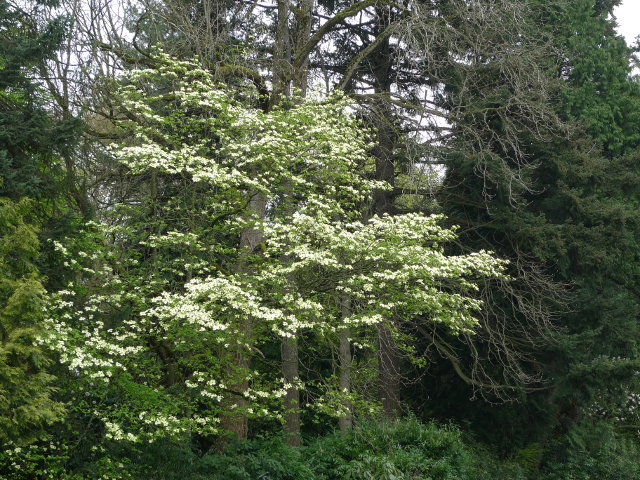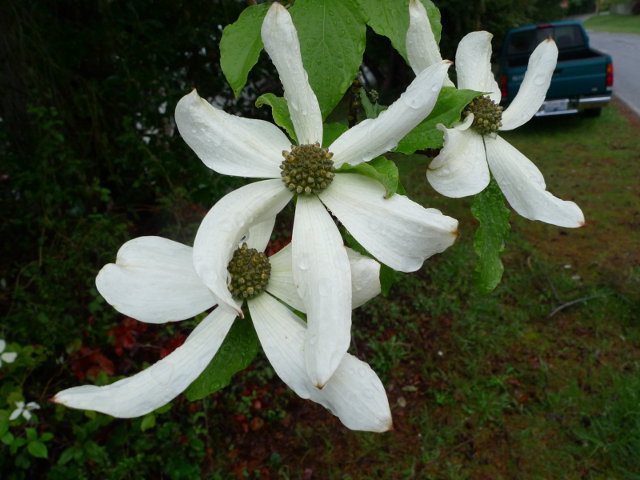Pacific Dogwood
Published at 23:34 on 3 May 2018


I’m late writing this post; I should have written it a week or two ago. Our native dogwoods (Cornus nuttallii) are just about finished with their spring bloom, so be sure and enjoy it while it lasts.
It might surprise many to learn that the flowers of this tree are tiny, greenish, and inconspicuous. “But they are obviously large and white!” one may be tempted to object. What appears at first glance to be a single flower with four to six large petals is in fact a cluster of tiny, greenish flowers surrounded by white bracts (modified leaves).
For much of the year, the Pacific Dogwood is an easy-to-overlook understory tree in our forests, but when in bloom they can be spectacular. This species is similar to the eastern Flowering Dogwood (Cornus florida), but in all respects (leaves, flowers, overall size) is larger. The flowers ripen into tightly-packed clusters of red to orange berries by autumn.
The main blooming season is in April, sometimes with a secondary lesser blooming in August or September. As if the flowers and colorful fruit weren’t enough, this tree ends the growing season with beautiful display of pink to red foliage.
All the above characteristics might have one thinking this would be a popular and prized ornamental, but the Pacific Dogwood does not transplant well and tends to be fussy about growing conditions. If you are lucky enough to have one on your lot, leave it alone and treasure it!
There are now fewer Pacific Dogwoods than there used to be, due to dogwood anthracnose, an introduced fungal parasite, having reduced this tree’s numbers. The same disease attacks the more commonly cultivated Flowering Dogwood, and to a lesser degree the also-cultivated Kousa Dogwood (Cornus kousa). The latter two species bloom later in the spring than our Pacific Dogwood.
